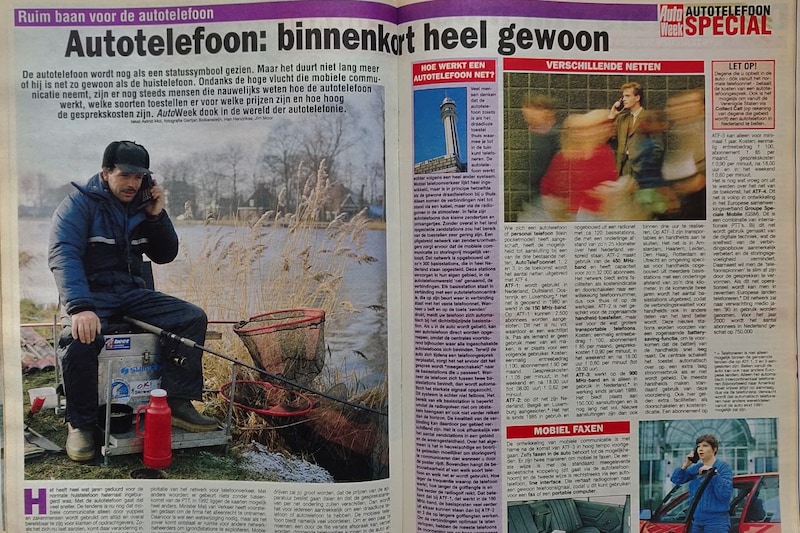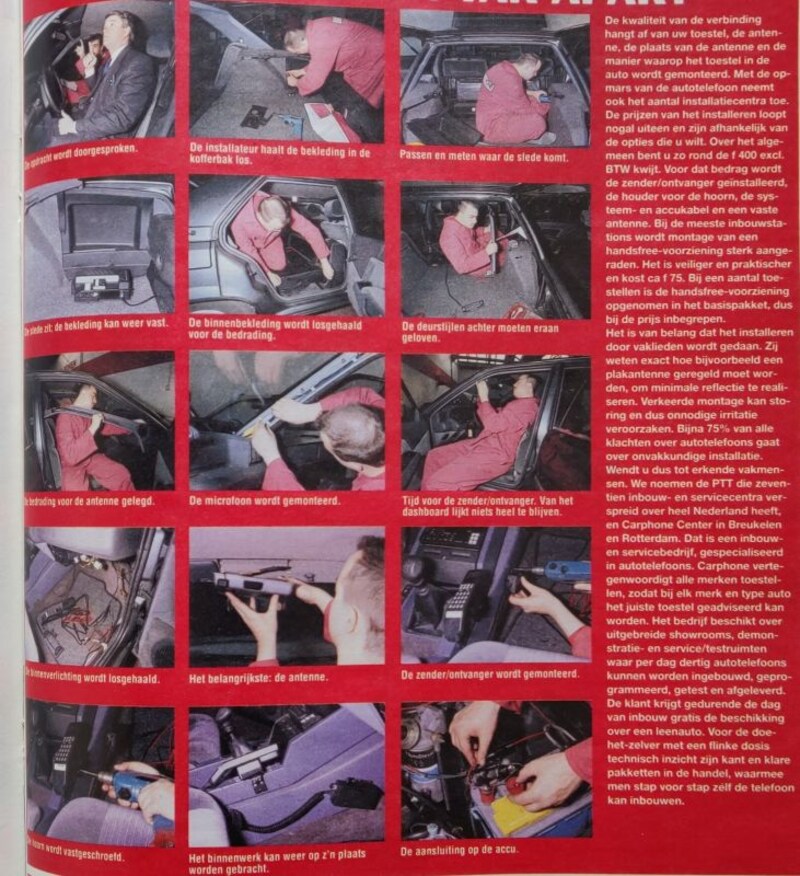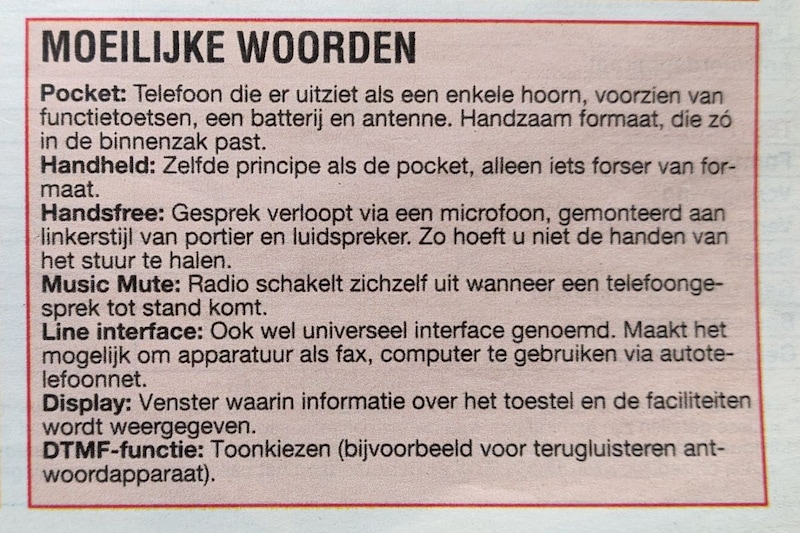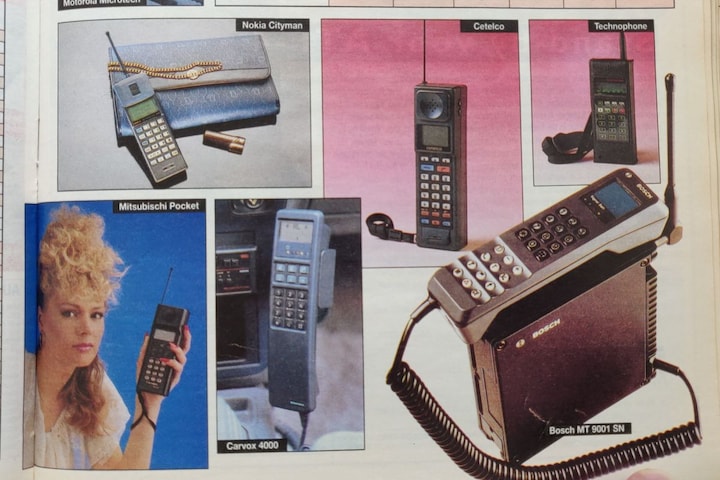




Nowadays we have almost grown into our mobile phone, but 30 years ago it was still a relatively new phenomenon. In 1991 telephony in the car was not yet commonplace. We went into it extensively in Techzle 13 of 1991.
Going out without a phone in your pocket is hard to imagine for most these days. In 1991, however, telephony was mainly for the home. At the time, quite a few people already had a car phone for business use, but in the years that followed, the mobile phone for private use would only make a huge advance both outside and in the car. In anticipation of that madness, Techzle decided at the time to highlight which options there were if you wanted to be accessible in your car. One principle is clearly more successful than the other.
Fixed or transportable
The landline car phone, that’s where it all started. We described it, along with its more mobile brothers, in 1991 as ‘something for yuppies and business people’, but that was about to change: “In less than ten years, the car phone will be just as common as the phone at home, because it becomes accessible to people with a narrower budget. ” However, in 1991 it was still an expensive affair. Either you had to buy a car that already had a car phone in it, or you could have one built in afterwards. The latter was far from interesting for most Dutch people, because it was simply too expensive for that. We showed how the whole process worked, with the installation of the power supply, cables for the antenna and the mounting of the ‘seat’ for the car phone. Cost; about 400 guilders. If you wanted to be able to call hands-free, an additional 75 guilders was added. Yes, regardless of the costs for the device itself.

The landline car phone could still be used purely in the car itself and could cost you quite a bit. If you had even more to spend and were willing to do so for more convenience, there was the option for a partially mobile car phone. The so-called ‘transportable’. That was one without a cable, which you could use and charge in the car, but also take it out of the holder and use it just outside the car. The main signal came in through the installation in the car and the antenna on the car, but was amplified and passed on to the antenna of the phone itself.
Handheld
Finally, there was, really state-of-the-art in 1991, the ‘handheld’, or ‘pocket phone’. Yes, the cell phone. The car didn’t really play a role in this anymore. After all, these were telephones with which you could simply call anywhere, provided there was coverage, and the signal was established directly by the telephone itself without the necessary assistance from antennas on the car. Already sounded like the ultimate solution at the time, but in 1991 there were still some major drawbacks. First of all, these devices were of course shockingly expensive at the time, but the signal in particular was sometimes very disappointing. In addition, it did not take very long before you ran out of battery charge.
There the car came around the corner again. There were solutions that almost everyone will remember. After all, you could install a car kit for the mobile phone, so that it could be recharged in the car. A principle that still applies to a certain extent today, although you now charge your phone via a USB cable or via induction. Hands-free calling with your mobile phone while driving was also easier because of the car kit, often via an extra microphone connected to the car kit, which was mounted in the A-pillar, for example. With the phone in the car kit, the signal was often also amplified via the antenna on the car, otherwise various manufacturers also offered ‘signal boosters’.

The choice
So there was still quite a wide choice in the early 1990s. Did you still go for a landline, or were you already rich or successful enough to put your hands on a ‘pocket phone’? In any case, they all had one thing in common: the telephones were pretty straightforward in design and almost all already had a display on which you could read various data.

In 2021 it looks hopelessly outdated, but you would probably know how it works without any major problems and you can bet that such phones would last a long time. It does make us a bit sentimental, although things are a lot easier nowadays. We are more distracted than ever by our phones. Something that was already foreseen in 1991. Handheld telephoning and working with the telephone were, not surprisingly, already labeled as a danger to road safety and therefore the focus had to be on installing telephones that could be used hands-free. Then, provided that few actions were required to initiate a conversation, there would be little wrong with it. “To top it all off, scientists concluded that making phone calls on boring road sections is actually good: it increases attention for traffic,” we even stated 30 years ago.